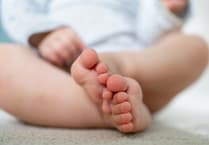As we continue out look at who we are thanks to the results of the 2021 Census, this week we look at people with disabilities and nationality.
In 2021, 6.7 per cent of South Hams residents were identified as being disabled and limited a lot. This figure decreased from 7.1 per cent in 2011. These are age-standardised proportions. Age-standardised proportions are used throughout this section. They enable comparisons between populations over time and across geographies, as they account for differences in the population size and age structure.
The decrease in the proportion of residents who were identified as being disabled and limited a lot was greater across the South West (1.1 percentage points, from 8.1 per cent to 7.0 per cent) than in South Hams (0.4 percentage points). Across England, the proportion fell by 1.6 percentage points, from 9.1 per cent to 7.5 per cent.
Census 2021 was undertaken during the coronavirus (COVID-19) pandemic. This may have influenced how people perceived their health status and activity limitations, and therefore may have affected how people chose to respond.
Caution should be taken when making comparisons between 2011 and 2021 because of changes in question wording and response options.
The percentage of people who were identified as being disabled and limited a lot in South Hams decreased by 0.4 percentage points
In 2021, 3.7 per cent of South Hams residents did not identify with any national identity associated with the UK. This figure increased from 2.3 per cent in 2011.
In 2021, just under 1 in 50 people (1.7 per cent) identified with a UK and non-UK national identity, compared with 0.6 per cent in 2011. The percentage of residents in South Hams that identified as “British only” increased from 17.8 per cent to 60.0 per cent.





Comments
This article has no comments yet. Be the first to leave a comment.